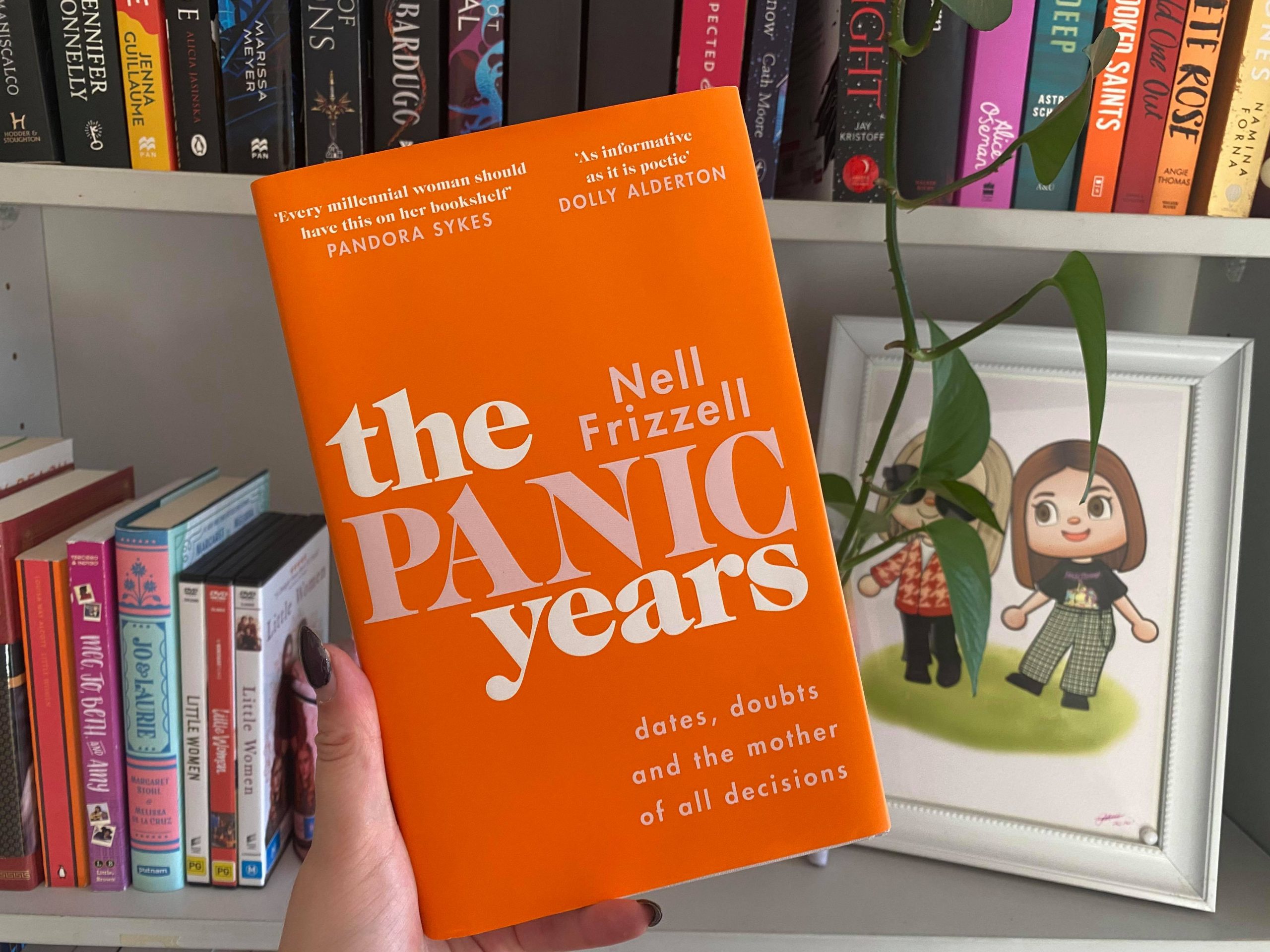Written by Mackenzie Stolp
Before I begin my review of this book, I wish to make one thing very clear – I have not yet reached my Panic Years and I am barely thinking of children at all. At 22 I have not yet reached the period that Nell so-calls ‘The Panic Years’, and I found it hard to relate and engage. Obviously, I take full responsibility for this – Nell Frazzle did not write this book for me, I am not its intended audience but, in saying this I did genuinely enjoy my time reading The Panic Years.
This book reads like a consoling friend calming another down through a baby-induced panic attack. It argues beliefs about pregnancy and childbirth that our society has relied on for generations. Beliefs there is a ‘correct’ time to have a child, that the pregnancy is solely a woman’s responsibility, and that money and IVF are a sure way to become pregnant. All misconceptions that secure woman’s places in society as a vessel for childbirth, and nothing else. Childbirth is a glorious and precious thing, but the pressure and expectations placed on pregnancy turn into a turbulent period of judgements and assessments from others.
The insight I received into this period of life was outstanding – the information both in statistical and lived-experience form was so interesting. The book covered a variety of topics that can create fear and anxious feelings in women and it appears that almost every facet of pregnancy has the ability to cause stress and anxiety, however Frizzle dissects each of these and provides helpful and reassuring insight.
I think one of the stand-out aspects of this book was the discussion on monetising women’s anxieties surrounding pregnancy – and also women’s trouble getting pregnant. Although the statistics throughout were UK-based, it was incredibly alarming to learn less than 10% of people fall pregnant through IVF; a system that can take years, dedication, sacrifice and thousands of dollars. IVF is almost pitched as a sure way to fall pregnant, but the reality is most women do not.
Another little-discussed topic that Frizzle dissects is anxiety during pregnancy and postpartum depression. You might be thinking – well obviously anxiety is normal, and we’ve all heard of postpartum depression (PPD), but this is the most brutally honest account of PPD I have ever read. Frizzle talks of wanting to leave her new baby in the forest and just walk away from it all, and while this statement might be met with concern or fear from some people, it was the comfort and understanding these feelings are entirely normal that pulled Frizzle through. Isolation after pregnancy is common, and the normalisation of PPD is crucial to allowing pregnant women to process their grief and anxieties post-partum.
Although I think people who are pregnant, trying to get pregnant or are currently in their panic years are the most likely to benefit from this book; it is genuinely a great insight into motherhood that is not often easily accessed. While it can be messy at times, and as pregnancy is so unique it is hard to entirely relate to Frizzle’s story, The Panic Years should be celebrated as a triumph for shining a spotlight on the shared experience for so many women, which is so little discussed.


